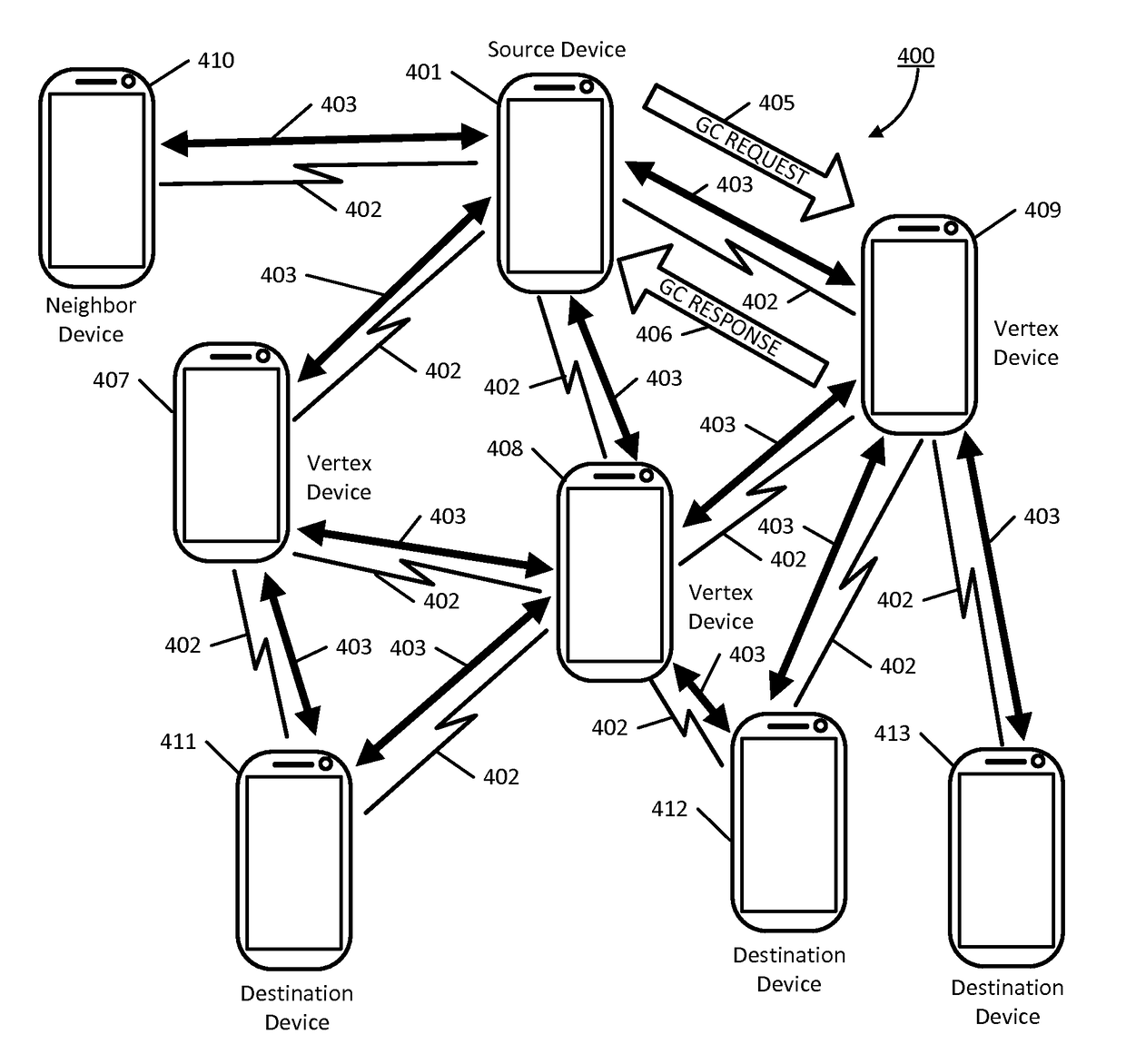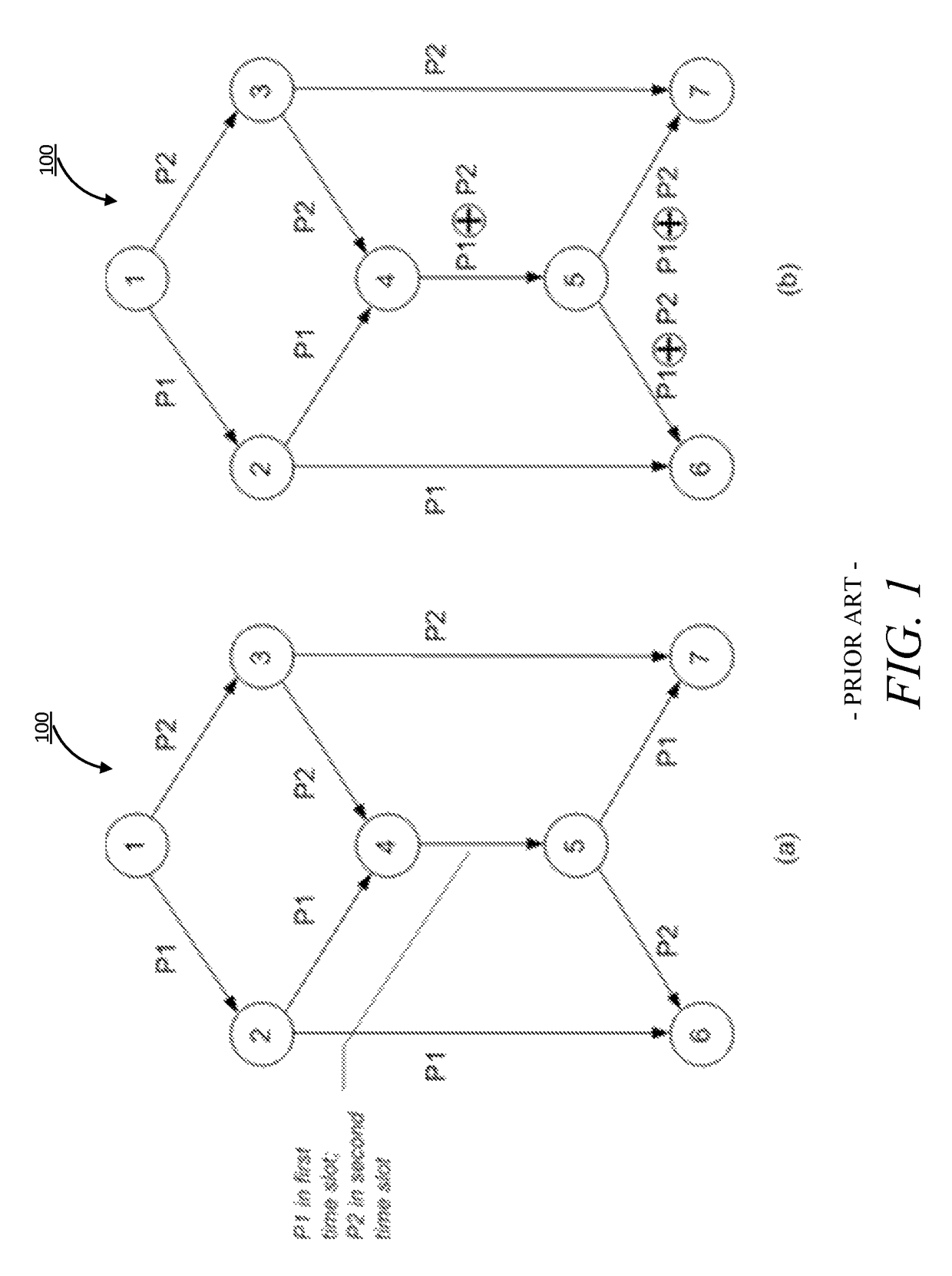Wireless ad hoc network assembly using network coding
a network assembly and network technology, applied in the field of network coding application, can solve the problems of network link bottlenecks, not fully alleviating the problem, and not being able to form direct communication links between arbitrarily selected sets of devices
- Summary
- Abstract
- Description
- Claims
- Application Information
AI Technical Summary
Benefits of technology
Problems solved by technology
Method used
Image
Examples
Embodiment Construction
[0065]Briefly, the present disclosure provides processes for assembling a wireless ad hoc network with network coding. The wireless ad hoc networks assembled using the disclosed processes, among other things, have improved throughput because the number of transmissions at the intermediate nodes are minimized. The disclosed processes provide for one-to-many communication such as when packets are multicast from one source device to several destination devices, and many-to-many communication, such as when different streams of packets may be transmitted from a source device to a corresponding set of destination devices within the ad hoc network.
[0066]In an aspect of the present disclosure, a method of setting up a wireless ad hoc network includes constructing an initial network graph by a source device. The network graph represents the source device, at least one intermediate device, and at least one communication path between the source device and the intermediate device. The source de...
PUM
 Login to view more
Login to view more Abstract
Description
Claims
Application Information
 Login to view more
Login to view more - R&D Engineer
- R&D Manager
- IP Professional
- Industry Leading Data Capabilities
- Powerful AI technology
- Patent DNA Extraction
Browse by: Latest US Patents, China's latest patents, Technical Efficacy Thesaurus, Application Domain, Technology Topic.
© 2024 PatSnap. All rights reserved.Legal|Privacy policy|Modern Slavery Act Transparency Statement|Sitemap



